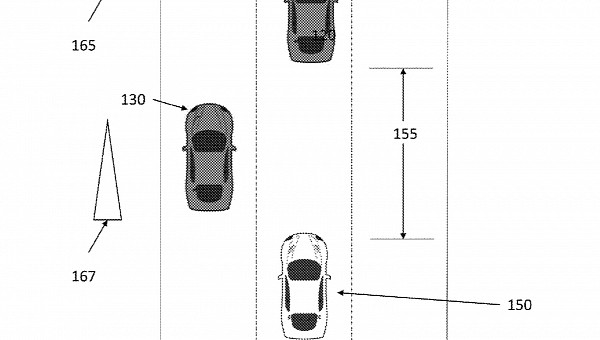General Motors is working on new technology to detect hard braking and then deal with its effects in a way that would improve traffic safety.
In a patent called “traffic flow risk prediction and mitigation,” the carmaker explains that hard braking can not only disrupt traffic, but also cause safety risks. A vehicle braking hard could increase the likelihood of a crash, especially as the reaction time increases for the following vehicles.
General Motors says the hard braking can occur due to various causes, including distracted drivers, slippery road conditions, debris on the roadway, or changes in traffic flow.
As such, hard braking isn’t necessarily caused by a bad driver, though its effects are in all scenarios the same.
The carmaker explains that hard braking can be detected through various methods, including by reading data supplied by vehicle sensors. In other cases, the other vehicles on the road could also transmit similar information, but General Motors says crowdsourcing could also help on this front. Regardless of the used methods, the system could use various approaches to deal with the hard braking and minimize the disruption it causes.
General Motors claims that a driver who slams on the brakes on a regular basis could be considered of “high risk”. As such, in the case of commercial drivers, the system could flag them as candidates for additional training. The purpose is to reduce risky driving behavior, eventually helping them prevent hard braking.
In the case of regular drivers, General Motors says its technology could provide tips on how to improve the driving style. Once repeated hard braking is detected, the system could calculate a risk threshold score. The system would generate guidance specifically to help drivers bring their scores to a lower level, therefore encouraging safer driving.
The system can also be connected to vehicle navigation systems to help improve traffic flow. If hard braking is frequently reported in a certain location, the onboard systems could be notified, eventually sending the driver to a different and safer route. The analysis could use historical patterns to determine a certain time or day when hard braking is more likely to occur.
Eventually, the purpose is to make traffic safer, but at the same time, to also maintain the flow and avoid significant slowdowns. The hard braking measurements can be adjusted by the carmaker, including by measuring the distance between the vehicles and the speed change that occurs when the brakes are engaged.
For now, General Motors’ idea is still in the patent stage. This means the concept is currently in its early days, but given the push for self-driving vehicles, it’s probably just a matter of time before the production phase is reached. General Motors filed the patent application back in September 2021.
General Motors says the hard braking can occur due to various causes, including distracted drivers, slippery road conditions, debris on the roadway, or changes in traffic flow.
As such, hard braking isn’t necessarily caused by a bad driver, though its effects are in all scenarios the same.
The carmaker explains that hard braking can be detected through various methods, including by reading data supplied by vehicle sensors. In other cases, the other vehicles on the road could also transmit similar information, but General Motors says crowdsourcing could also help on this front. Regardless of the used methods, the system could use various approaches to deal with the hard braking and minimize the disruption it causes.
General Motors claims that a driver who slams on the brakes on a regular basis could be considered of “high risk”. As such, in the case of commercial drivers, the system could flag them as candidates for additional training. The purpose is to reduce risky driving behavior, eventually helping them prevent hard braking.
In the case of regular drivers, General Motors says its technology could provide tips on how to improve the driving style. Once repeated hard braking is detected, the system could calculate a risk threshold score. The system would generate guidance specifically to help drivers bring their scores to a lower level, therefore encouraging safer driving.
The system can also be connected to vehicle navigation systems to help improve traffic flow. If hard braking is frequently reported in a certain location, the onboard systems could be notified, eventually sending the driver to a different and safer route. The analysis could use historical patterns to determine a certain time or day when hard braking is more likely to occur.
Eventually, the purpose is to make traffic safer, but at the same time, to also maintain the flow and avoid significant slowdowns. The hard braking measurements can be adjusted by the carmaker, including by measuring the distance between the vehicles and the speed change that occurs when the brakes are engaged.
For now, General Motors’ idea is still in the patent stage. This means the concept is currently in its early days, but given the push for self-driving vehicles, it’s probably just a matter of time before the production phase is reached. General Motors filed the patent application back in September 2021.







